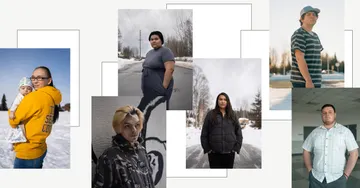Today we published an investigation into victim compensation funds, which reimburse crime victims or their survivors for costs such as hospital bills and funeral expenses. Seven states reject applicants if they have a criminal record, and our investigation into two of those states—Ohio and Florida—found these rules have disproportionately hurt black crime victims.
Losing out on victim benefits is one of the lesser-known consequences of having a criminal record. Through interviews with dozens of victims and their families, we found these policies can leave people struggling with significant debt, all during a time when they’re still recovering from the trauma of the crime itself.
Over the course of a year, we made records requests in each of the states that deny compensation to people with a previous conviction: Florida, Ohio, Arkansas, Louisiana, Mississippi, Rhode Island and North Carolina. More victims were rejected in Ohio and Florida than any of the other states reviewed. Still, the number of rejections in Arkansas and Mississippi remains unknown. Both states refused to provide even basic statistical information.
There is a lot of room for more reporting. For our analysis, we kept the criteria narrow. We looked only at states that used past criminal convictions as disqualifiers, even when the victim completed all his or her court obligations, such as completing probation or paying fines. But there are other versions across the country. A number of states reject victims currently on probation or parole, or disqualify those who still owe money as a result of their conviction, while others reject applicants who are convicted of a felony after filing a claim.
And there are other types of reasons victims are denied that critics say can be problematic. States require that victims cooperate with law enforcement and not contribute to their own injury or death. Determining whether those criteria have been met is often based on what police reported or on a hospital drug test. They are worth exploring further.
Victim compensation programs do a lot of good, helping many people get on their feet during the worst times of their life. But that’s also exactly why it’s important for reporters to delve into these programs and how they decide who gets money, and who does not.
Below is a guide to investigating victim compensation in your state:
Step 1: Review the federal data
The federal government collects data annually from each state, including how many applications were received, a breakdown of applicants by race, the number of rejections, and the reasons for the rejections. That information can be found here. Click on your state, then on the tab “VOCA reports.” Older reports can be requested from a press officer.
Look for how many applications were received versus how many were denied, what denial reasons were most common, and how long on average it takes the state to process an application. In the written section at the back, some administrators describe challenges the funds are facing, which can help inform your approach for the next step.
Step 2: Get better data
While the federal reports are a good place to start, some important information isn’t collected. For example, the federal reports don’t provide breakdowns by race for victims whose applications were denied. The only way to see whether there are racial disparities in the distribution of this money is to get the information directly from the state, either by asking or filing an open records request.
Don’t expect it to be easy. We had to fight for months to obtain records. In both Ohio and Louisiana, we requested individual application and denial letters. We ended up building our own databases from paper records, including applications and rejection letters, after both states said they could not produce the information from their own databases. In Florida, administrators were able to provide a spreadsheet for analysis. One hint: we narrowed down our requests to a year or two.
Beyond reviewing who is rejected and who is approved, other things to consider include:
-
What are the maximum payouts by category, and when was the last time those were increased?
-
Is there money earmarked for victims that goes unspent, and if so, how much?
-
How does crime data in your state compare with the number of applicants, and what are programs doing to make sure victims know this money exists?
Step 3: Dig for more records
In some states, victims funds are overseen by a board, which has meetings and produces meeting minutes, correspondence, and other records. In Louisiana, those meetings are open to the public. In other states, victim funds are controlled by attorneys general, and decisions aren’t necessarily made in a public forum, which can make the reporting a bit more difficult. But they often prepare annual reports about their activities, and because victim compensation is partially funded by the federal government, they are occasionally audited.
Once a victim is rejected, states offer a variety of methods to appeal that decision, and those records can provide a window in to the decision-making process. For example, in Ohio, appeals are considered by the state’s Court of Claims and are available online.
Step 4: Talk to the people directly affected
Reach out to local victim organizations, including domestic violence shelters and support groups for survivors of murder victims. They often help people navigate the compensation system and would know both the pitfalls and the positive aspects of these funds. They might be able to point you to sources. You can also find victims with records requests: We found the people in our story by requesting individual applications, denial letters and other files.
